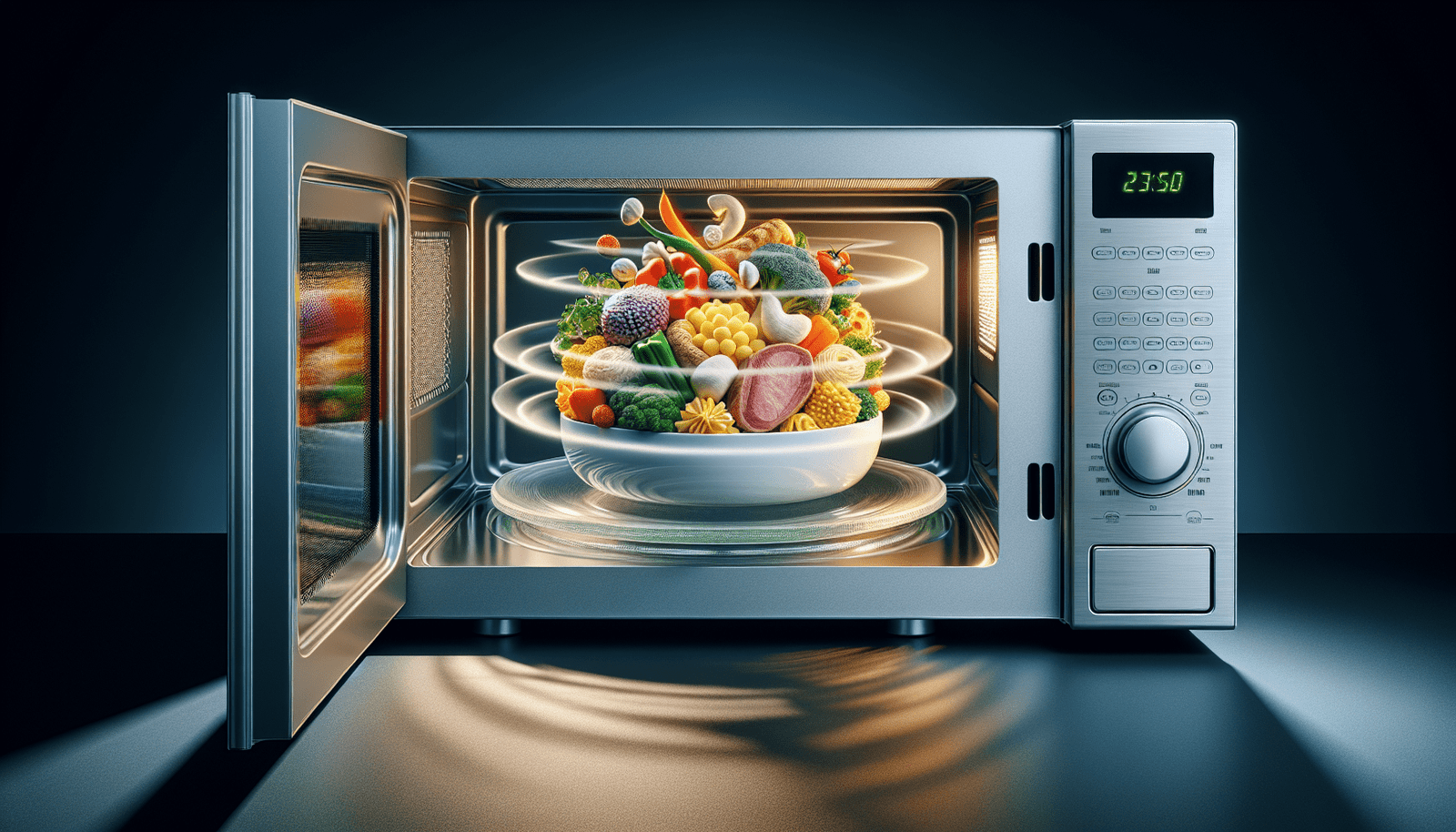Why Does The Microwave Plate Spin? Microwaves have become a staple in our modern kitchens, effortlessly heating up leftovers or thawing frozen meals with just a touch of a button. However, have you ever wondered why the plate inside the microwave spins? While it may seem like a simple task for convenience, the spinning plate actually serves a crucial purpose in ensuring even heating and preventing hotspots. By better understanding the science behind this rotating mechanism, you can gain a deeper appreciation for the engineering marvel that is your microwave.
The Purpose of Microwaving
Microwaving is a common method used for heating food quickly and evenly. One of the main purposes of using a microwave is to reduce cooking time, making it a convenient and efficient option for busy individuals. By understanding the basic components and mechanisms of microwave ovens, we can gain a deeper insight into how they work and the role of the turntable in ensuring uniform heating and minimizing cooking time.
Understanding Microwave Ovens
Microwave ovens consist of several basic components that work together to generate and distribute microwave radiation. These components include the magnetron, the cavity, the waveguide, and the microwave oven’s interior design. The magnetron is responsible for creating the microwave radiation, while the cavity and waveguide help to distribute the microwaves throughout the oven. The interior design of the microwave oven is specifically designed to reflect and diffuse the microwaves, ensuring thorough heating of the food.
Function and Mechanism of the Turntable
The turntable in a microwave oven plays a vital role in ensuring uniform heating. It overcomes the uneven distribution of microwaves by continuously rotating the food during the heating process. This rotation helps to prevent hot spots and ensures that all parts of the food receive equal exposure to the microwaves. Additionally, the turntable minimizes cooking time by ensuring that heat is evenly distributed, allowing the food to cook more quickly and efficiently.
Synchronous Motors
To achieve the rotating motion of the turntable, microwave ovens often utilize synchronous motors. Synchronous motors are specially designed motors that provide the required rotational motion. These motors are driven by magnetic fields and electrical currents, allowing them to rotate the turntable at a consistent speed.
Motor and Drive System
The motor and drive system of a microwave oven are responsible for mounting and connecting the synchronous motor to the turntable. This system consists of various components such as gears, belts, and pulleys, which work together to transmit the rotational motion from the motor to the turntable. Additionally, rotational speed control mechanisms ensure that the turntable rotates at the desired speed, providing optimal heating performance.
Role of the Turntable Support
Apart from the rotational motion provided by the motor, the turntable support is an essential component that maintains stability and distributes the load evenly. It prevents accidents by securely holding the turntable and the food being heated. The turntable support also helps to ensure smooth rotation, reducing any potential resistance or friction that may occur during operation.
Alternatives to the Turntable
While the turntable is a widely used component in microwave ovens, alternatives do exist. One such alternative is the use of stirrer fans that distribute the microwaves throughout the oven, resulting in more even heating. Another alternative is the use of waveguides, which are channels that guide and distribute the microwaves more efficiently. Both alternatives have their advantages and disadvantages, and the choice between them depends on a variety of factors, including the oven’s design and intended use.
Common Issues with Turntables
Like any component, turntables may experience issues that can affect their functionality. One common issue is the plate not rotating, which could be caused by a malfunctioning motor or drive system. Another issue is the turntable not aligning properly, which can lead to uneven heating. Additionally, foreign objects accidentally left on the turntable can cause the mechanism to malfunction. Regular maintenance and care can help identify and address these issues promptly.
Maintenance and Care
To ensure optimal performance and longevity of the turntable, regular maintenance and care are essential. Cleaning the turntable regularly helps to remove any food residue or spills that may accumulate and affect its rotation. Additionally, checking the motor and drive system for any signs of wear or damage can help prevent potential malfunctions. Troubleshooting common problems, such as issues with rotation or alignment, should also be part of regular maintenance to address any emerging issues promptly.
Future Innovations
As technology continues to advance, we can expect future innovations in turntable systems and microwave heating technology. Improved turntable systems may offer smoother rotation, enhanced stability, and even more efficient heating. Advancements in heating technology may lead to more precise temperature control and better energy efficiency. Furthermore, the integration of smart features into microwave ovens could provide users with enhanced convenience and customization options, further revolutionizing the way we heat and cook food using microwaves.
In conclusion, the turntable in a microwave oven plays a crucial role in ensuring uniform heating and minimizing cooking time. Its function and mechanism, supported by synchronous motors, allow for efficient and even distribution of microwaves throughout the oven cavity. Regular maintenance and care are necessary to address common issues and ensure optimal performance. As technology progresses, continued innovations in turntable systems and heating technology will further enhance the efficiency and convenience of microwave ovens in the future.



